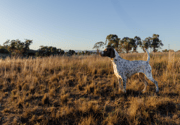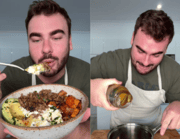Some of the most GROTESQUE dishes served throughout history
By
- Replies 11
Here at the SDC, we always make sure that our members are up to date with the latest recipes that will surely delight them.
However, have you ever wondered what are some of the most horrible dishes in history?
British food historian Seren Charrington Hollins has recently published a book titled Revolting Recipes from History, exploring some of the most horrible recipes served in British dinner tables.
The book will be available in the UK soon. Credit: Pen & Sword Books Ltd.
In her book, the historian said that what we find "disgusting" is subjective to where we come from, the timeline where we are born and raised, and the culture that we grow into.
Hence, the book will not discuss some of the "weird" dishes that other cultures serve on their tables, promoting cultural sensitivity and understanding of other people's ways of living.
So, for those who are curious which recipes made the cut, here are some of the most revolting food ever to exist in western history.
1. Calves heads and cow udder pies
Royal banquets in the 16th century usually included calves heads and cow udder pies in their menu. Credit: Getty Images.
It is no secret that royal families across Europe have enjoyed scrumptious banquets throughout history.
However, did you know that calves heads and cow udder pies used to be some of the staples during the 16th-century royal banquets?
Charrington Hollins revealed in her book that in December 1545, a banquet for the Order of the Golden Fleece served some of the stomach-churning dishes in the modern palate.
"There were dishes of beef and mutton, hams and tongues, soups, calves' heads, venison with turnips, mashed peas, veal, hot swan (signe chault), goose, hens, turkeys, pies of cows' udders and entremets," she wrote.
"This rather copious feast of food was followed by roasted sausages, tripe cutlets, ragouts and pies of venison and partridges, roast pheasants, capons and pigeons."
"Once these delicacies had been sufficiently enjoyed the final serving included peacocks, partridges, water-hens, brawn, hot pigeon pies, cold heron pies, roasted rabbits and geese as well as jellies and other dishes."
"There was plenty of offal and dishes that we perhaps wouldn't imagine or even consider eating today."
2. Tins of decomposing meat destined for the Navy
Meat inspectors were greeted with sights of putrid meat. Credit: Getty Images.
The food historian revealed that in 1852, a group of meat inspectors examined more than 300 cans of meat that were meant to be rationed for the British Navy.
It was said that the producer of the tins was a company owned by Stephan Goldner, who claimed to discover the method of preserving canned food using calcium chloride instead of water, a technique that modern-day manufacturers still use today.
"This was heralded as being even safer than the 'traditional' water bath method because the calcium chloride allowed for higher temperatures to be reached and thus reduced the risk of incomplete sterilisation and putrefaction of the contents," Charrington Hollins wrote.
While the meat inside the cans seem to be preserved for consumption, the inspectors discovered loads of putrid meat inside the tins upon opening them.
The inspectors described the meat pieces as "in an advanced stage of decomposition" that "the stone floors needed to be coated with chloride of lime to mask the stench".
The food historian wrote: "During the course of their investigations they fished out pieces of heart, rotting tongues from a dog or sheep, offal, blood, a whole kidney 'perfectly putrid', ligaments and tendons and a mass of pulp. Some organs appeared to be from diseased animals."
It was said that only 42 cans were deemed acceptable for human consumption.
3. Brain cakes
Let's be honest, the thought of eating brains is definitely stomach-churning.
However, did you know that brain-based recipes have been rampant since the Ancient Rome period?
In fact, the practice of eating brains has been carried over through the Victorian and Edwardian eras.
4. Stuffed donkey and elephant consommé
Parisians had to source meat from alternative sources as food supplies ran out during the siege of the city in 1871. Credit: Getty Images.
It was said that food supplies ran out during the Siege of Paris by the Prussian forces at the turn of 1871.
Meat from cats, dogs, horses and rats were all served at dinner tables.
The wealthy Parisians also consumed camel, elephant, and zebra during the bleak autumn and winter months.
Additionally, Charrington Hollins revealed that in December, just two months into the sieges, the celebrated Restaurant Voisin on Rue St Honoré curated a menu consisting of recipes using meats from some of the world's most endangered animals.
It was said that even the most high-profile attendees of the peacetime dinner — including the Prince of Wales — sampled the dishes which include "head of a donkey with sardines and radishes, elephant consommé, bear shanks in pepper sauce, 'cat with rat', and camel roasted, English fashion".
Charrington Hollins wrote: "As wealthy gourmands eyed up exotic meat, there was little that was safe from the glint of the knife and fork. Cellar rats, yak and zebra were all devoured gluttonously."
5. Human toe tipple
In more recent times, one bar served a drink that contained a dehydrated human toe.
Yeah, you read that right. This little piggy didn’t make it to market, but it ended up in someone's cocktail.
In 1973, visitors to the Downtown Hotel in Dawson City, Yukon, Canada were able to order any cocktail served with a human toe floating in it.
It was said that the bar had a slogan that time, saying: "You can drink it fast, you can drink it slowly, but your lips have gotta touch the toe."
It was rumoured that the first toe served is from Louie Liken, a miner and rum runner who had to sever his frostbitten appendage in the 1920s.
Louie reportedly tried preserving the toe in alcohol until his death.
When Louie died, someone discovered the preserved toe and took it to his local bar and added it to a drink.
It was said that the toe survived for a decade until one drinker accidentally swallowed it when he fell back on his chair.
So, there you have it, folks! More stories on the bizarre recipes can be found in the Revolting Recipes from History by Seren Charrington Hollins published by Pen & Sword Books Ltd that will be available in the UK soon!
What are your thoughts on this? Share them with us in the comments below.







